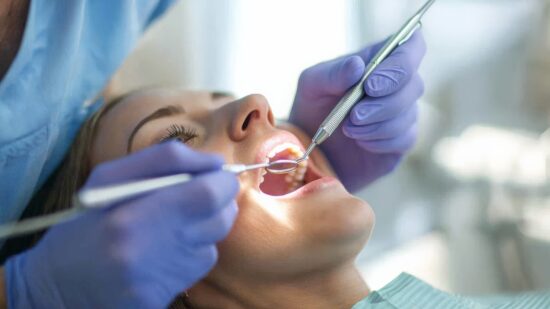Medication-Related Osteonecrosis of the Jaw (MRONJ) is a serious complication associated with antiresorptive and antiangiogenic therapies, primarily prescribed for conditions like osteoporosis and cancer. As David Webb Oral Surgeon has noted, diagnosing and staging MRONJ effectively is vital to guiding treatment and improving patient outcomes. Practitioners need a thorough understanding of symptoms, diagnostic protocols, and the staging system to provide optimal care.
Recognizing Symptoms of MRONJ
MRONJ presents with distinct symptoms, which may vary depending on the stage of the condition. Early stages often manifest subtly, making vigilant observation crucial for early intervention. Patients may report persistent pain or discomfort in the jaw, localized swelling, and delayed healing following dental extractions or other invasive procedures. Exposed bone in the oral cavity is a hallmark of MRONJ, often accompanied by infection, pus discharge, and foul breath.
Practitioners should also consider patient history when evaluating symptoms. A history of antiresorptive or antiangiogenic medication use is a critical indicator, especially in individuals undergoing cancer treatment or managing osteoporosis. Symptoms like loosening of teeth, tingling sensations in the jaw, and soft tissue inflammation should prompt further investigation to rule out MRONJ.
Diagnostic Protocols for MRONJ
Accurate diagnosis of MRONJ requires a multifaceted approach that combines clinical evaluation, patient history, and imaging studies. Clinical evaluation focuses on identifying exposed or necrotic bone persisting for more than eight weeks in patients with no history of radiation therapy to the jaw. Soft tissue examination can reveal erythema, swelling, and signs of infection.
Imaging plays a critical role in confirming MRONJ diagnosis and assessing the extent of the disease. Panoramic radiographs are commonly used as a preliminary diagnostic tool, offering a broad view of the jaw and surrounding structures. For more detailed assessment, computed tomography (CT) scans can provide high-resolution images, highlighting bone destruction, sequestra, and any involvement of adjacent structures.
Laboratory tests may complement imaging by ruling out other conditions, such as osteomyelitis or metastatic bone disease. Elevated inflammatory markers like C-reactive protein (CRP) or erythrocyte sedimentation rate (ESR) can indicate infection, but their presence is not definitive for MRONJ. Practitioners must synthesize clinical findings, imaging results, and patient history to arrive at an accurate diagnosis.
Staging MRONJ: The Clinical Framework
Staging MRONJ is essential for determining the severity of the condition and guiding treatment strategies. The American Association of Oral and Maxillofacial Surgeons (AAOMS) has developed a widely accepted staging system that categorizes MRONJ into distinct stages based on clinical presentation.
Stage 0: Patients in this stage exhibit non-specific symptoms without clinical evidence of necrotic bone exposure. They may report jaw pain, persistent swelling, or tingling sensations. Radiographic changes, such as bone sclerosis or thickening of the lamina dura, may be present, but there is no visible exposed bone.
Stage 1: At this stage, exposed and necrotic bone is visible but asymptomatic, with no evidence of infection. The surrounding soft tissue remains intact, and patients generally do not report significant discomfort.
Stage 2: Patients present with exposed and necrotic bone accompanied by infection and symptoms such as pain, erythema, and swelling. Pus discharge and foul breath may also occur, reflecting the presence of localized infection.
Stage 3: The most advanced stage involves extensive necrosis, which may extend beyond the alveolar bone. Patients may experience severe pain, pathological fractures, extraoral fistulas, or communication between the oral and sinus cavities. This stage often requires more aggressive surgical intervention.
Importance of Early Diagnosis and Staging
The prognosis of MRONJ is closely linked to the timing of diagnosis and the accuracy of staging. Early detection allows for less invasive treatment strategies and better outcomes, while delayed diagnosis can lead to more complex interventions and irreversible damage. Practitioners must maintain a high index of suspicion in patients presenting with risk factors, such as a history of bisphosphonate or denosumab use.
Staging is not just a tool for categorizing the disease but also a guide for tailoring treatment. For example, patients in Stage 0 or Stage 1 may benefit from conservative management, including antimicrobial rinses and pain control, while those in Stage 2 or Stage 3 often require surgical debridement or resection.
Challenges in MRONJ Diagnosis and Staging
Despite established guidelines, diagnosing and staging MRONJ can be challenging. Non-specific symptoms in the early stages may mimic other conditions, such as periodontal disease or temporomandibular joint disorders, leading to delayed or missed diagnoses. Additionally, variations in imaging findings and patient presentations can complicate staging decisions.
Practitioners must remain vigilant and adopt a multidisciplinary approach to overcome these challenges. Collaboration between oral surgeons, oncologists, and radiologists can enhance diagnostic accuracy and ensure that patients receive comprehensive care. Clear communication with patients about the risks associated with their medications and the importance of regular dental check-ups is also critical in preventing and managing MRONJ.
Advancing MRONJ Research and Clinical Practices
Ongoing research into MRONJ pathophysiology and risk factors is crucial for improving diagnostic protocols and treatment strategies. Studies exploring the molecular mechanisms underlying bone necrosis and the role of medication dosage and duration can provide valuable insights. Emerging diagnostic tools, such as salivary biomarkers and advanced imaging techniques, hold promise for earlier detection and more precise staging.
Clinical practitioners must stay informed about these advancements and incorporate evidence-based practices into their approach to MRONJ management. Continuing education, professional collaboration, and active participation in research initiatives are vital for addressing the evolving challenges of MRONJ.
Final Thoughts
MRONJ remains a complex and multifaceted condition requiring meticulous attention to diagnosis and staging. By combining clinical evaluation, imaging studies, and a thorough understanding of the staging framework, practitioners can provide effective care and improve patient outcomes. Early detection and accurate staging are critical components of successful MRONJ management, emphasizing the need for a proactive and multidisciplinary approach.
